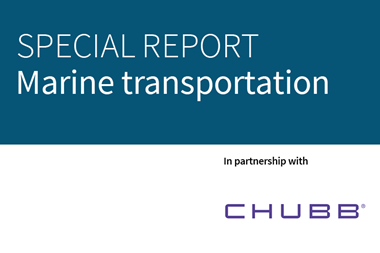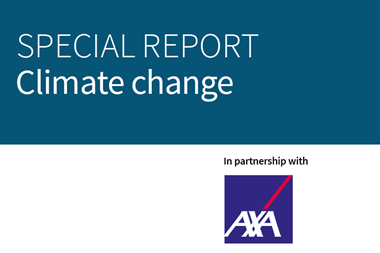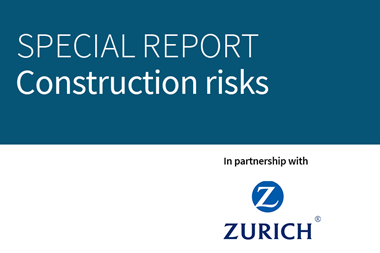The trade credit insurance market has had to rebuild its reputation in the aftermath of the banking crisis, so credit insurers are focusing their attention on product innovation.
Since the height of the financial crisis, capacity has steadily returned to the trade credit insurance market and demand for these products has risen. But memories of an extremely difficult market remain. When claims increased, some credit insurers cancelled policies and retracted their involvement in many segments of the market.
The credit insurance market is different today from what it was before the crisis. “There’s lots of capacity and competitive pricing for risks in most sectors,” says Willis Financial Solutions executive director Richard Talboys. “There is caution about some sectors, however. You find some insurers show a lack of interest or capacity in, say, consumer electronics or retail or construction risks.”
Premiums have recovered and are back at £334m – the same level of GWP written by the market in 2007. Claims have also reduced substantially, from nearly 22,000 at the height of the crisis to nearly 11,000 in 2012, according to statistics from the ABI. However, the total number of policies was 10,550 in 2012, down from 14,086 in 2008.
“As a consequence of the banking crisis, the credit insurance market lost some 4,000 policyholders and even today we’ve barely been able to get them back – they look almost lost to the industry,” says AIG head of UK trade credit William Clark. “In 2008, the major credit insurers cut cover rather arbitrarily and that really has had a knock-on impact. Clients have looked at the value of credit insurance and sought something different, something more consistent.”
The drop in policyholders could also be because of other factors. Mergers and acquisitions have shrunk the number of insureds, while some companies may have gone out of business. Others, feeling the pinch, may have opted to take the risk on to their own balance sheet.
“I suspect the reason some policyholders left was because of capacity,” says Clark. “They saw capacity being reduced and started to question the premium being paid.”
The ABI statistics reveal the distribution of trade credit insurance, and it is clear that the biggest drop in policyholders has come from SMEs (customers with profits of up to £3m). Those with turnover of more than £100m, meanwhile, increased their share, and account for 42% of the market today.
The statistics also tell another story. They show how trade credit insurance markets absorbed a substantial amount of claims during the crisis years. Insurers paid out more than $6bn of claims worldwide. As loss ratios recovered and competitive forces returned, the need to innovate was obvious. Policyholders began to demand non-cancellable cover. “AIG has long been a proponent of non-cancellable limits and this is now part and parcel of almost every trade credit insurance house,” says Clark.
While the worst of the downturn is over, the European sovereign debt crisis rumbles on and insurers have seen an uptick in notifications of overdue accounts in Europe, a potential precursor to claims. “There is a concern, expressed more by the insurers, that there are a lot of potential failures out there – zombie companies that may be trading profitably, but can never pay down their enormous debts – which are paying the price of excess leverage,” says Talboys.
Unease about the creditworthiness in some European countries (Greece in particular) led to a deterioration of insurer credit limit underwriting in the eurozone markets last year, according to a survey of Marsh’s trade credit insurance experts. The decision by many European banks to stop trade financing increased the risk of default among importers and exporters seeking trade credit cover.
“Southern Europe is still under the gun as far as its prospects are concerned, although there does seem to be some better news coming out from southern Europe in terms of GDP expectations from 2014 onwards,” says Clark. “Europe is seemingly set for recovery, but it is not going to be without bumps along the way and it’s going to be a long road to get to pre-2008 levels.”
Out of the ashes
Should the eurozone troubles escalate, Talboys thinks credit insurers and policyholders will be better prepared than they were during the financial crisis. It is clear that a different credit insurance market has emerged from the downturn – one that is increasingly innovative and invests in getting close to the risk in order to better underwrite it.
“The view from the industry is that the big three insurers are much better prepared if a crisis recurs because they were underwriting a lot of risk pre-2008 based on fairly sketchy information, so they had too many risks on their books and, due to over-competitive premiums rates, not enough fat in their reserves to pay significant losses,” he says.
The biggest shift since the financial crisis has been the introduction of excess-of-loss products. Unlike traditional whole turnover insurance, excess-of-loss products are non-cancellable. They also require insureds to take on a certain level of risk, and responsibility for risk mitigation, before the insurance will pay out. As the name implies, excess-of-loss products are designed for claims above a certain expected level.
“A traditional policy would be a whole turnover product where every single customer on a debtor portfolio is covered,” explains Marsh’s trade credit practice leader in Europe the Middle East and Africa Tim Smith. “With excess-of-loss, a company agrees to lose a certain amount of losses through bad debts, each year. That might just be frictional business losses, and a catastrophe insurer will say, if that’s your normal level of losses we will insure you above that. It’s recognising that there is a risk in your business and covering you for catastrophe losses.”
“Some companies are conservative and want first-dollar cover,” he adds. “They don’t mind paying more for their insurance, but if they have a loss they want to claim. Other companies understand they can sustain a certain level of losses, but want to be covered for losses that would hurt their balance sheet. Post-crisis insurers are more likely to allow you to focus on where a company perceives risk and where a company can be hurt through financial trading risk.”
The shift towards excess-of-loss products is affecting the market. The big three traditional whole turnover credit insurers – Euler Hermes, Atradius and Coface – have begun to offer a mix of cancellable and non-cancellable limits. Last year, Euler Hermes launched an excess-of-loss unit.
By investing in credit management, insureds can lower their premium spend by taking some “skin in the game”, says Willis’s Talboys. “If you’ve got a good industry-leading credit management team and you’ve taken a big chunk of risk, then you align your risk with an insurer that can effectively sit alongside you. It will then pick up the catastrophes, but won’t over-control you by telling you how much you can sell to which companies, provided you follow your own credit procedures and conduct appropriate due diligence.
“The more we encourage companies to align their interest with the insurer, the better responses you will ultimately get, because the insurer can see that everyone is driving in the same direction,” he adds.
“More companies see they need to start investing in their own credit management capabilities, so are becoming more suitable for an excess-of-loss product,” says AIG Europe trade credit regional manager Neil Ross. “It has provided a more consistent underwriting approach throughout the economic cycle, providing organisations with greater certainty from non-cancellable limits – it doesn’t seem to be as volatile. There is a level of risk-sharing between the policyholder and the underwriter. Clients find overall it gives them greater coverage across the whole portfolio, although they are taking a deductible.”
Innovation is one way insurers have been attracting customers back into the credit insurance market.
“We’ve probably seen more product innovation in the past three or four years than in the past 20 years. Part of that is because there is better technology now, which gives you more capabilities to develop new products,” says Ross.
Long road ahead
But despite bouncing back from the downturn, credit insurers must not rest on their laurels, says Ross. “Market loss ratios have been relatively stable, but there is a lot of potential for risk volatility: conflict in the Middle East and North Africa, southern European countries still in recession and South-East Asia slowing down,” he says.
“As an industry we’ve got to develop products and solutions to attract more companies to buy credit insurance. We have to look at new ways to broaden the appeal.”
Click the link below to download and view the full report.




















No comments yet